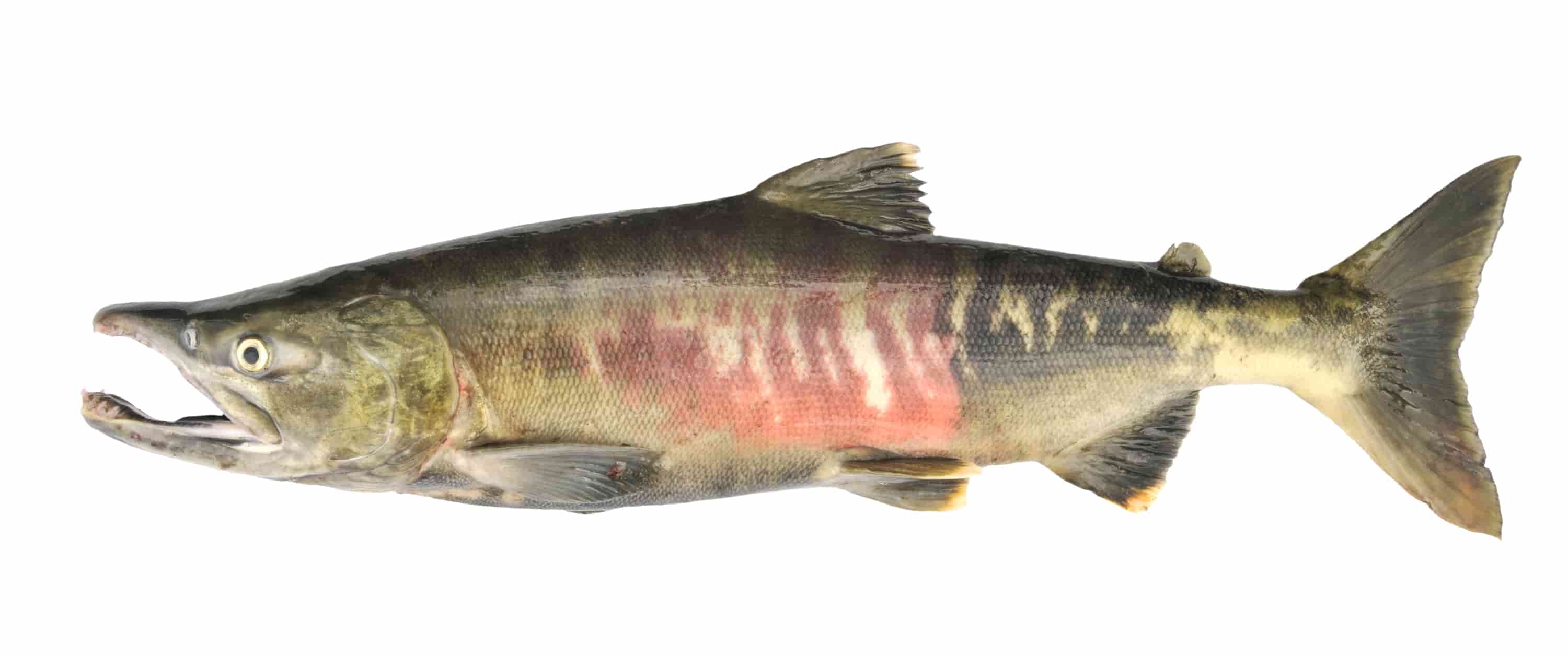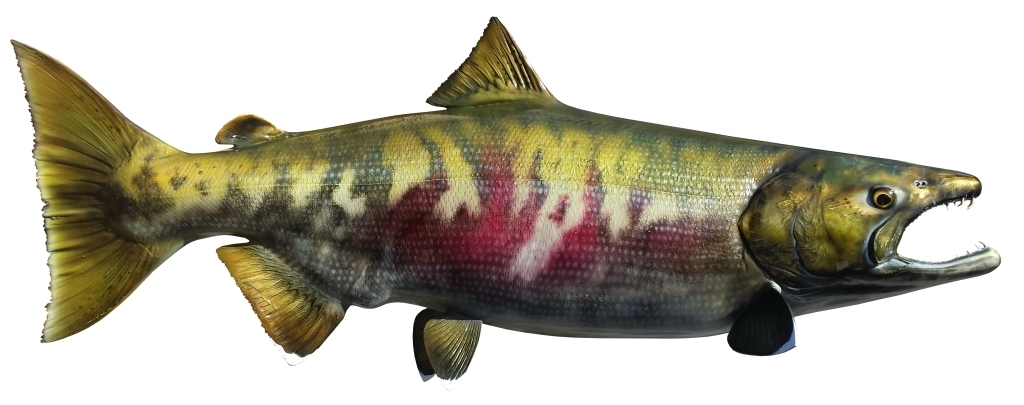

Common names for Chinook, king or spring salmon
Chinook, tyee, blackmouth
Other languages for Chinook, king or spring salmon
- French name: Saumon royal
- Italian name: Salmone reale
- German name: Königslachs
Introduction to Chinook, king or spring salmon
Chinook salmon are the biggest and most prestigious Pacific salmon species. Unlike other Pacific salmon species, which spend between one and three years at sea, kings may spend up to five years away from their birthplace streams. They are collected mainly by trollers but also by seiners and gillnetters from central California to the Yukon River in Alaska and Canada. Although some chinooks exceed 50 pounds, the majority of the commercial catch is between 11 and 18 pounds. Chinook salmon are often referred to and sold by the river system from where they originate. Copper River kings are exceptional. The Kuskokwim and Yukon rivers are also found in Alaska. Copper River salmon return in late May or early June marks the start of Alaska’s wild salmon season. In addition to British Columbia, Washington, New Zealand, and Chile, Chinook salmon are farmed in British Columbia, Washington, New Zealand, and Chile.
Product profile for Chinook, king or spring salmon
For their long-distance migration, Chinooks require a big fat store. This results in a flavor that is buttery and creamy. The oily meat of chinook salmon is softer than that of other species of wild salmon. The flesh of chinook salmon is almost always red, never pink, with the exception of rare white-meat strains. White king is a pale-meat strain that should not be confused with “pale kings,” which are sexually mature fish. The white king’s flavor is as rich as the more strongly colored chinook’s, despite its pale hue.
Cooking tips for Chinook, king or spring salmon
The rich and delicious king salmon responds well to simple treatments, but it may also stand up to more robust flavors. Broiling or grilling a piece of king salmon with pesto sauce is a simple recipe that packs a taste punch. Begin by leaving the top side of the pan uncooked. Apply a large amount of basil pesto to the cooked top surface after flipping.
Nutrition facts for Chinook, king or spring salmon
Calories: 179 Fat Calories: 94 Total Fat: 10.4 g Saturated Fat: 3.1 g Cholesterol: 50 mg Sodium: 47 mg Protein: 19.9 g Omega 3: 2.3 g
Primary product forms for Chinook, king or spring salmon
Fresh: Whole, Dressed (head on), H&G, Steaks, Fillets (bone-in/boneless) Frozen: Whole, Dressed (head on), H&G, Steaks, Fillets (bone-in/boneless) Value-added: Smoked, Canned
Global supply for Chinook, king or spring salmon
Canada, Chile, New Zealand, Russia, United States, Iran